
From approximately 100-350 AD there was division over seven books in our New Testament. No one questioned the apostolicity of the four Gospels, the book of Acts, the thirteen letters of Paul, 1 Peter, and 1 John. After all, these were written by apostles, or with “apostolic approval.” For instance, Mark is considered to be Peter’s gospel, and Luke researched his Gospel, and was an evangelist along with the Apostle Paul as he wrote Acts. Justin Martyr, second century AD Christian apologist, records that people would read these New Testament writings in church services interchangeably with the Old Testament, which was a display of their authority from God. “The fact of public reading in the churches became for later generations one of the prime criteria of canonicity.” Besides Justin Martyr, other second century Christian fathers referencing the New Testament books include, but are not limited to, Clement of Rome, Ignatius, and Tertullian.
However, these seven were questioned: Hebrews, James, 2 Peter, 2 and 3 John, Jude, and Revelation. For years, the main question was their authorship. The author of Hebrews is not stated, but the message was not contradictory to the rest of the Bible, so it was used. James and Jude were not Apostles but half-brothers of Jesus and later followers, so their works were included later as well. Comparing the writing styles of 1 Peter and 2 Peter reveals two distinct styles, until people settled on the explanation that Peter wrote his first letter with Silas’ help (1 Peter 5:12), while the second epistle was written by Peter alone. 2 and 3 John were short letters that were not cited often, and written by “the Elder,” presumably the Apostle John due to the language of these letters. Revelation is written by “John,” but some questioned whether that was the Apostle or not.
Dr. Martin Franzmann of Concordia Seminary said the following in his book, The Word of the Lord Grows: “Christianity did not develop from a religion of Spirit into a religion of the Book, as some have claimed. It was from the beginning a ‘book religion,’ and the new book, our New Testament, took its place beside the old, not suddenly and magically, but by a gradual process over the years as the church worshiped, did its work, and fought its battles…No commission of theologians, no church councils defines the canon or imposes a canon on the church. The canon is not being made; it is growing and being recognized. This remains the case in the fourth century also, when the canon assumed the form it was destined to retain ever after in the Western church.”
In the end, around 350 AD, the sixty-six books we read from Genesis to Revelation were complete. You may find some Bibles with the Apocrypha included. Norman Geisler points out that these books were added by the Roman Catholic Church in 1546 as part of the Counter Reformation. They were not originally part of the canon due to contrary doctrines, historical anachronisms, and geographical inaccuracies. Interestingly, the Jewish philosopher Philo, the Jewish historian Josephus, and Jesus never quoted them as the Word of God. The New Testament writers and early church didn’t recognize them as inspired either.
At the beginning of this series of blogs I mentioned how some not only believe the Bible is a man-made book, not inspired by God at all, but is also a book constructed by a committee of men centuries later in time. Nothing could be farther from the truth. You not only have the testimony of the Bible itself, but the witness of historical writings to verify this. The claims of Christianity are backed up by the facts. This passes the first worldview test again—it fits the facts. This map is reliable! So from Moses writing Genesis around 1400 BC to John writing Revelation around 100 AD, God has spoken through the prophets and the apostles.
Learn how to defend your Christian Faith
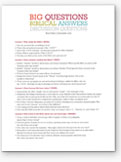
Big Questions Biblical Answers Supplemental Materials
by Brad Alles
- July 2025
- November 2024
- August 2024
- July 2024
- June 2024
- September 2022
- August 2022
- July 2022
- June 2022
- May 2022
- April 2022
- March 2022
- February 2022
- January 2022
- December 2021
- November 2021
- October 2021
- September 2021
- August 2021
- July 2021
- June 2021
- May 2021
- April 2021
- March 2021
- February 2021
- January 2021
- December 2020
- November 2020
- October 2020
- September 2020
- August 2020
- July 2020
- June 2020
- May 2020
- April 2020
- March 2020
- February 2020
- January 2020
- December 2019
- November 2019
- October 2019
- September 2019
- August 2019
- July 2019
- June 2019
- May 2019
- April 2019
- March 2019
- February 2019
- January 2019
- December 2018
- November 2018
- October 2018
- September 2018
- August 2018
- July 2018
- June 2018
- May 2018
- April 2018
- March 2018
- February 2018
- January 2018
- December 2017
- November 2017
- October 2017
- September 2017
- August 2017
- July 2017
- June 2017
- May 2017
- April 2017
- March 2017
- February 2017
- January 2017
- December 2016
- November 2016
- October 2016
- September 2016
- August 2016
- July 2016
- June 2016
- May 2016
- April 2016
- March 2016
- February 2016
- January 2016
- December 2015
- November 2015
- October 2015
- September 2015
- August 2015
- July 2015
- May 2015
- April 2015
- March 2015
- February 2015
- January 2015
- December 2014
- November 2014
- October 2014
- September 2014
- August 2014
- July 2014
- June 2014
- May 2014
- April 2014
- March 2014
- February 2014
- January 2014
- December 2013
- November 2013
- October 2013
- September 2013
- August 2013
- July 2013
- June 2013
- May 2013
- April 2013
- March 2013
- February 2013
- January 2013
- December 2012
- November 2012
- October 2012
- September 2012
- August 2012
- July 2012
- June 2012
- May 2012
- April 2012
- March 2012
- February 2012
- January 2012




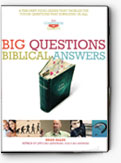
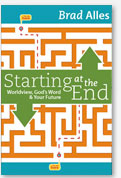
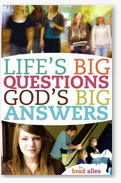
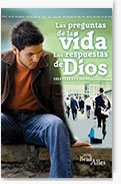



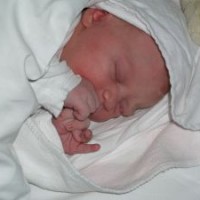
Comments are closed.